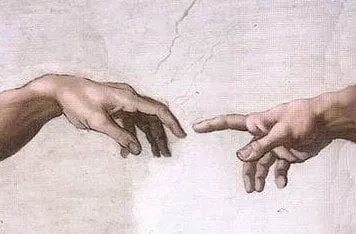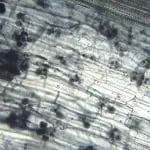[Originally published as Jesus’ Seven Signs in John (3)]
When Jesus saw him lie, and knew that he had been now a long time in that case, he saith unto him, Wilt thou be made whole? (John 5:6)
John introduces the context of this story with “there was a feast of the Jews; and Jesus went up to Jerusalem” (John 5:1).
Jesus observed not only the commanded feasts of the Lord but also festivals that came long after the giving of the Law, such as the Feast of the Dedication (John 10:22), which we call Chanukah (Hanukkah) today. The feast mentioned here in the fifth chapter of John probably had an even older tradition. Although John does not name it, it was probably the Feast of Purim, which takes place on the 14th of Adar — around mid-March. I arrive at this conclusion because in the next chapter, Jesus returns to Jerusalem to celebrate the Passover for the second time.
As Jesus walks around, He sees a man lying by the Pool of Bethesda. “Bethesda” is Aramaic, and it means “House of Kindness,” or “House of Mercy.” Besides this man, there were many others, but Jesus was drawn to this man. Why? John does not record his malady.
Whatever his ailment, John reports that he suffered with it for 38 years (John 5:5). Perhaps the end of the account provides greater insight. After being healed, the man sought out Jesus. “Afterward Jesus findeth him in the temple, and said unto him, Behold, thou art made whole: sin no more, lest a worse thing come unto thee.” (John 5:14). “For the Son of man is come to seek and to save that which was lost” (Luke 19:10).
If Jesus’ purpose were simply to heal, there were many others there He could have also helped, but Jesus chose this man. “For the LORD seeth not as man seeth; for man looketh on the outward appearance, but the LORD looketh on the heart” (1 Samuel 16:7).
What was this man’s sin that caused Jesus to single him out?
Eli Lizorkin-Eyzenberg, commenting on this passage, offers some interesting insight. Recent archeological discoveries have associated the Pool of Bethesda with the cult of Asclepius.1 Asclepius was the Greco-Roman god of healing and wellbeing. If this is the case, the man had placed his faith and hope in a false god for 38 years. No wonder he was disheartened!
“When Jesus saw him lie, and knew that he had been now a long time in that case, he saith unto him, Wilt thou be made whole?” (John 5:6).
Jesus knew that he had been there a long time. As God, Jesus demonstrated His omniscience. He knew everything about this man. So, why did He ask such a seemingly obvious question? Rather than respond with a simple “yes,” note the man’s response (I can almost hear the whining!).
The impotent man answered him, Sir, I have no man, when the water is troubled, to put me into the pool: but while I am coming, another steppeth down before me. (John 5:7)
Jesus did not allow for his excuses. “Jesus saith unto him, Rise, take up thy bed, and walk” (John 5:8).
As in the previous miracles recorded by John, there was no fanfare with this act. Jesus did not so much as extend a hand to help him up. “And immediately the man was made whole, and took up his bed, and walked: and on the same day was the sabbath” (John 5:9).
We do not know if the man was a cripple, all we know is that he had an “infirmity.” Whatever it was left him too weak or injured to walk, but immediately his health was restored. Just like Jesus knew that this invalid had waited for healing by the pool for 38 years, He also knew exactly the nature of his malady. Like a bolt of lightning, the man must have felt the power of God surge through his body so that, without hesitation, he stood up, picked up his bed, and walked.
Not long after his healing, he was spotted carrying his bedroll by the Pharisees. “The Jews therefore said unto him that was cured, It is the sabbath day: it is not lawful for thee to carry thy bed” (John 5:10). “He answered them, He that made me whole, the same said unto me, Take up thy bed, and walk” (John 5:11).
The man was so excited about having his health restored that he failed to thank or even take notice of Jesus. When he eventually found Jesus, he pointed Him out to them and they sought to kill Him because He healed on the Sabbath. Jesus then affirmed His deity. But Jesus answered them, My Father worketh hitherto, and I work” (John 5:17). That enraged them even more because He claimed equality with God. “[The] Son of man is Lord also of the sabbath” (Mark 2:28; Luke 6:5).
The Lord Jesus Christ knows each of us intimately. He still heals, and He can do so any time He pleases, not only on the Sabbath, but every day of the week.
Footnote
- Eli Lizorkin-Eyzenberg, The Jewish Gospel of John: Discovering Jesus, King of All Israel, (Jewish Studies for Christians, Tel Aviv, Israel, 2015), 70-71.







